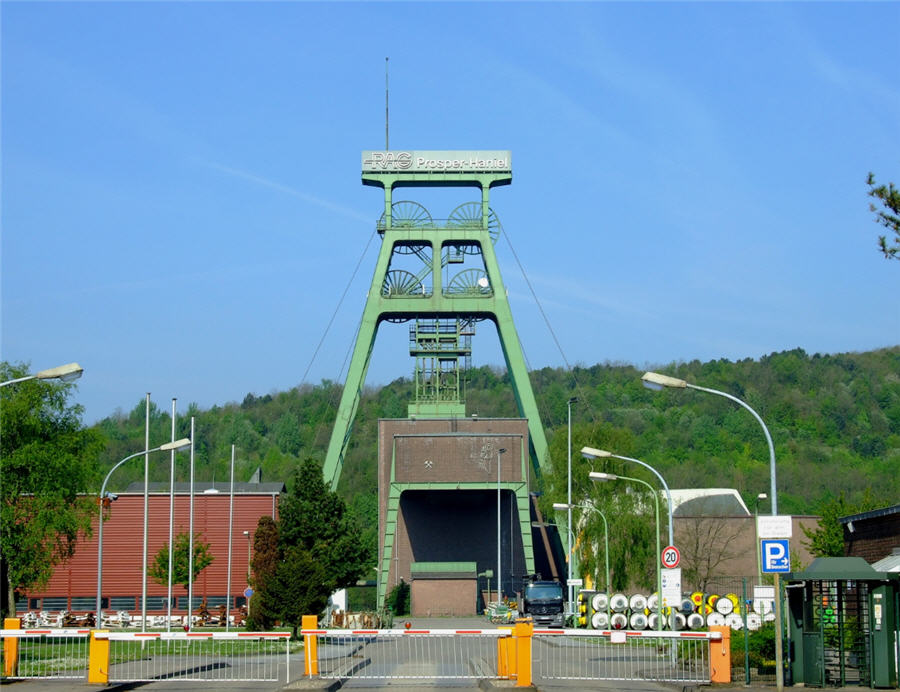
After following his father and grandfather into the pits of Germany’s Ruhr valley as a teenager, Andreas Schreiter’s family tradition will end when the country’s last hard-coal mine — the 150-year-old Prosper-Haniel site — shuts in December.
The 46-year-old — who still has the first lump of “black gold” he dug himself in 1991 — will be among some 1,400 miners to make a final trip past the gently illuminated shrine to Saint Barbara, the patron of miners, at the colliery’s entrance. The facility was the last holdout of two centuries of deep-mining history but can’t survive after the government pulled the plug on 1 billion euros ($1.1 billion) in annual subsidies.
Shuttering the site is especially bitter for the local community because Germany will need to burn the fuel for decades to come. But instead of supporting mining families in the Ruhr valley, the coal will be shipped on boats and barges from places like Russia, the U.S. and Colombia.
Those wealthy Bavarians would still be walking cows up and down the mountainside if it wasn’t for the miners of the Ruhr
“It’s the politicians that have decided to close this mine,” said Schreiter, who is struggling to figure out what to do after Prosper-Haniel ceases operation. “It hurts to think Germany will still be using coal.”
Concern about the demise of coal jobs in Germany highlights a growing backlash over the changes environmental policy are forcing on heavy industry everywhere. From President Donald Trump’s election in the U.S. to the divisions that brought down Australia’s last government, efforts to rein in fossil-fuel emissions are starting to cut into fields that once provided secure jobs, and the workers with the most to lose are becoming more vocal.
Despite 500 billion euros invested in a shift to renewable power — hard coal and its softer cousin lignite still generate more than one-third of Germany’s electricity needs. Closing all of the country’s roughly 120 coal-fired power plants may take over 20 years, according to the government.
Utilities, industry groups and other proponents argue that the most polluting fossil fuel is critical to maintain the stability of the power grid and limit price increases in a country that already has the highest energy costs in Europe. Wind, solar and other renewable sources, which account for 55 percent of German electricity capacity, are even more subsidized than coal mining, adding about 25 billion euros to power bills last year.
For others in Germany, the fuel’s demise couldn’t happen fast enough. Environmental groups are organizing rallies in Berlin and Cologne on Saturday to accelerate the exit, and this summer, activists succeeded in halting the expansion of an open-pit lignite mine, which would have dug up what’s left of a 12,000-year-old forest.

Chancellor Angela Merkel’s government sealed Germany’s exit from coal production in 2007. The plan contrasts with Trump’s efforts to revive the fuel, and the U.S. indeed stands to benefit, exporting 9.1 million tons of coal to Germany last year, second only to Russia’s 19.7 million tons.
Propping up coal mining has cost Germany some 40 billion euros since 1998, and continuing those payments have become untenable as the country struggles to meet targets to reduce greenhouse gas emissions, putting pressure on Merkel to show progress ahead of the annual UN climate talks, which start Dec. 3 in neighboring Poland.
Environmental goals and the poor economics of German coal made the miner’s jobs expendable, even if it’s a blow for the people in Prosper-Haniel’s hometown of Bottrop and tears at the social fabric in Germany.
“Those wealthy Bavarians would still be walking cows up and down the mountainside if it wasn’t for the miners of the Ruhr,” said Bernd Tischler, Bottrop’s mayor. Like other rustbelt towns, support for the populist Alternative for Germany surged in last year’s federal election to 12 percent to become the third-strongest party.
In its post-coal transition, Bottrop is offering subsidies aimed at attracting new companies and workers to a community increasingly populated by retired miners, according to the mayor. It’s also promoting attractions like a horror maze that includes a haunted coal shaft, a movie-themed amusement park and the world’s longest indoor ski slope.
It hurts to think Germany will still be using coal
Germany’s first deep-shaft coal mine opened in the 1820s, helping fuel the country’s industrial revolution as well as its military might during two World Wars. It also played a crucial role in Germany’s reconstruction, with mining employment peaking at over 600,000 workers in 1956.
Even as active mining ceases, the vestiges of that history will still guarantee some employment to clean up and stabilize the empty shafts. Over 1,000 engineers will work to stop toxic discharge from seeping into the water supply and prevent houses, factories and entire hillsides from collapsing into the vacant cavities hundreds of meters below the surface.
“Groundwater is really dirty, poison,” said Christof Beike, spokesman for the RAG Stiftung, a fund set up to help heal the scarred Ruhr landscape at a cost of a 200 million euros a year. “Down in the earth you even find stuff from the bombings of World War II.”
Those losing their jobs at Prosper-Haniel will be retrained to do other work, unless they’re over 50 years old — then, they’ll be able to collect pensions immediately. Ramazan Atli, a 46-year-old Prosper-Haniel veteran, will just miss out on early retirement and join a crew picking up discarded drills, helmets and other equipment in the abandoned tunnels.
“I suppose it’s time for me to do something else,” said Istanbul-born Atli, who followed his father into the coal shafts as a teenager in 1988. “But I’d gladly do every shift again and will really miss the lads and the camaraderie.”
(By William Wilkes, Brian Parkin and Vanessa Dezem)